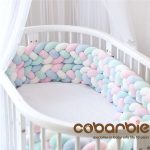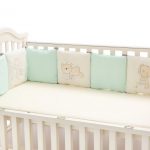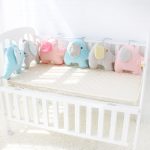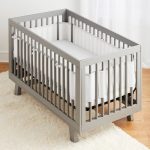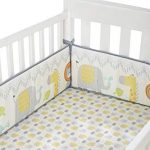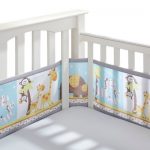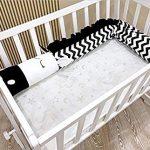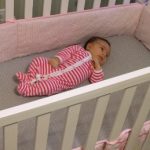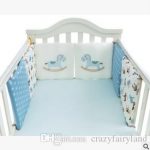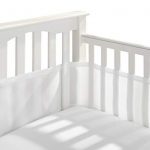As an Amazon Associate I earn from qualifying purchases.
Crib bumpers have long been a staple in nurseries, used to provide a cushioned barrier between a baby’s head and the hard wooden slats of a crib. However, over the years, concerns have been raised about their safety, leading to a significant evolution in the design and use of crib bumpers.
In the past, crib bumpers were typically made from padded fabric that attached to the inside of the crib with ties or Velcro. These bumpers were meant to prevent a baby from getting their limbs stuck between the slats of the crib or hitting their head on the hard surfaces. However, as research has shown that these traditional bumpers can pose a suffocation risk for infants, many parents have opted to remove them from their cribs.
In response to these safety concerns, manufacturers have started producing mesh crib liners as an alternative to traditional bumpers. These liners are breathable and lightweight, reducing the risk of suffocation while still providing a barrier between the baby and the crib slats. Additionally, some companies have introduced adjustable bumpers that can be attached securely to the crib to prevent them from coming loose and posing a hazard to the baby.
As awareness of safe sleep practices has increased, many parents have chosen to forgo crib bumpers altogether, opting instead for a firm mattress with a tight-fitting sheet. This minimalist approach reduces the risk of suffocation and other sleep-related hazards while still providing a comfortable and safe sleep environment for the baby.
While the evolution of crib bumpers has been driven by a desire to prioritize safety, the debate over their necessity and effectiveness continues. Ultimately, it is up to parents to weigh the benefits and risks of using crib bumpers and make the best decision for their child. The most important thing is to provide a safe and comfortable sleep environment for the baby, whether that includes traditional bumpers, mesh liners, or no bumpers at all.
Amazon and the Amazon logo are trademarks of Amazon.com, Inc, or its affiliates.
 yonohomedesign.com Garden and Interior Design Ideas
yonohomedesign.com Garden and Interior Design Ideas
